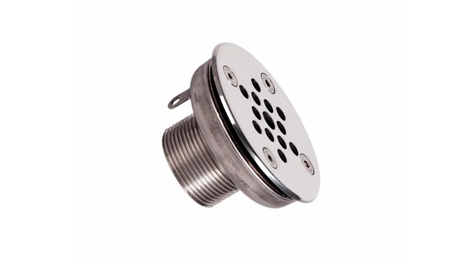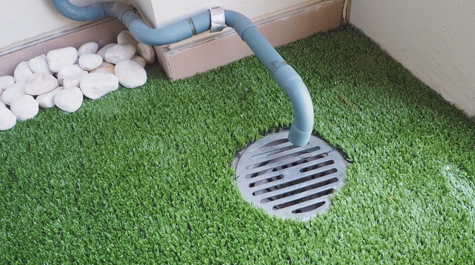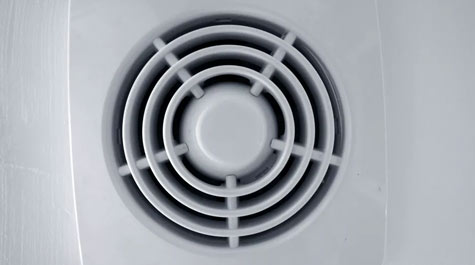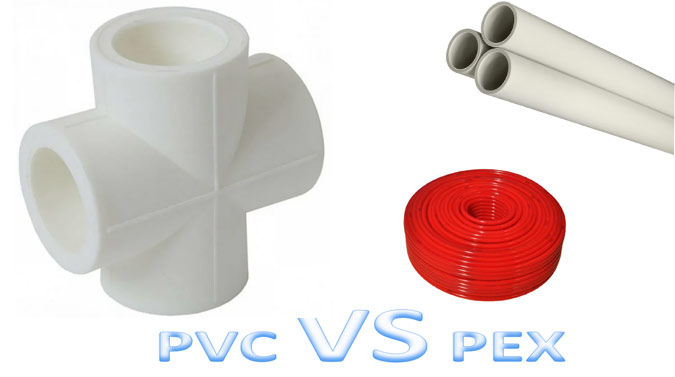Last Updated on May 22, 2023
A floor drain is a plumbing fixture installed at the lowest point of an area to allow water and other liquids to exit from it. In order for this function to work properly, there needs to be an external venting system that allows air into the pipe in order for the liquid or gas inside of it to flow out.
Venting can be done manually by lifting and lowering a valve on top of the drain with your hands, but more often than not, most drains are automatically vented through gravity or very low-pressure pumps.
The purpose of this post is to explain how to vent a floor drain that is not automatically vented. See this post if you need to know what type of floor drain you have.
Top Tips on How to Vent a Floor Drain

Fortunately, there are some easy steps to follow on how to vent a floor drain, and it takes very little effort or time.
Using PVC Pipes for Venting a Drain
If you find that your floor drain is not vented, it’s because there is no open pipe leading up from the drainage system, or the existing one is clogged.
Clogs often occur when sediment and other materials enter through the grate and eventually form a solid mass in the bottom of the pipe, preventing air from entering.
In order to clean the drain, you will need to use a wire brush and a stiff bristle brush to scrape off any clogs from the inside of the pipe, but make sure that you don’t damage the PVC pipes in the process.
It’s important not to use metallic tools when cleaning inside a metal pipe, or it might damage the plumbing vent and allow leakage to occur.
If cleaning it by hand does not work or if you don’t want to do it yourself for any reason, then you can always hire a plumber to do it for you.
Drain Pipes from the Floor

If there is no open pipe leading out from the drainage system, you will need to use a series of pipes that lead up from the basement floor drain and end at an open pipe on ground level.
Installing a Cleanout Plug
If the first pipe you will use does not have a cap on it, install one to prevent dirt and other materials from entering your drainage system.
The Copper Venting Method
This method is best used if you want to use a series of PVC vent piping, but it’s also good for any type of floor drain.
It entails removing an existing cleanout plug or cap from the top-most section of your drain and using a smaller piece of copper tubing that will go through it.
Then, attach a larger piece of PVC vent piping to the copper tubing and extend it up and through a nearby floor drain or directly to an open pipe at ground level.
Make sure that the larger piece of PVC piping is long enough so that water has to flow for about half an hour before one section becomes full, making it easy to detect any leaks.
Drilling Holes in the Drain to Allow Air Through
If there is no open pipe leading out from the drainage system, then you will need to drill holes into the floor drain in order for air to enter.
Using a Sump Pump for Venting

Venting can also be done by attaching a ground-level sewage ejector pump, forcing air through the pipes and into the drain.
Preventing the Back Flow of Gases and Odors
One common problem in a continuous loop venting system is that gas, which includes hydrogen sulfide tends to get trapped inside the pipe because there’s nowhere else for it to go, and when this happens, the gas may back up into the home through the drains.
Using a Dry Well for Water Discharge
A dry well is a buried or partially buried pipe that can be installed into the drainage system to act as an air-release chamber for gas and odors.
The Garage Ventilation Method
Another method of wet venting involves running a pipe from the floor drain to one or more holes drilled in the garage ceiling and then covering them with mesh wire to prevent animals and insects from entering.
Venting Through an External Wall
If you can’t vent through either an open pipe on ground level or at the ceiling of your home, then the only other way you can vent your floor drain is by running a pipe through an exterior wall, which should only be done as a last resort.
Using Multiple Vents Rather Than Just One
Using more than one vent allows for better air circulation inside the plumbing vent system and prevents gas from being trapped inside it. It’s also a good idea to have a blower installed in the system for this purpose.
Preventing Dirt from Entering Your Drainage System

If there is no wet vent pipe after your floor drain, it’s good to install one since you will also need it to take out water and other liquids that may get inside the system.
Precautions to Be Taken When Venting a Floor Drain
In order to vent a floor drain, you need to follow a few precautions, and the precautions that you need to follow are:
Avoid Overpowering Your Floor Drain
If you’re using PVC pipes for venting, then the diameter of the larger pipe should be about two-thirds larger than that of the smaller one to prevent backflow or to siphon in case of a power outage.
Keep an Eye Out For Corrosion
Make regular visual inspections of your venting system to check for leaks, rust, and corrosion.
Don’t Connect the Drain Directly To the Sewer
The sewage backflow might be enough to damage or destroy your floor drain seriously.
Make Sure That All Joints Are Airtight
Any cracks found in the drainage system might allow gases to seep into your home; the same goes for the joints.
Keep All Vents Well Ventilated
The floor drains are usually located in out of the way places where it is difficult to make visual inspections of them. Make sure that they are well ventilated regardless of installing a monitoring device on top of them.
Rubber Seal Your Vents Right
Silicone has been known to produce toxic fumes when burned, making it unsuitable for floor drain venting. The best material you can use is EPDM rubber, which can endure both low and high temperatures without deteriorating.
Get Rid Of Standing Water inside Your System
Standing water can attract mosquitoes and other insects to come inside your home, which can cause some serious health problems.
Use A Blower When Necessary
Blowers can be used to improve the ventilation of your vents and keep an eye on things in general. This is much more effective than using charcoal filters, which may fail to react in time because of their slow speed.
Check for Leaks Regularly
Leaks are usually caused by the improper fitting of joints, rust, corrosion, and loose covers. The latter may be the most common problem you will need to deal with in this case.
Frequently Asked Question
What Should I Do If I Find a Leak in My Floor Drain?
If you find a leak in your floor drain, then the best thing you can do is call a licensed plumber.
Can I Connect the Floor Drain Directly to the Sewer?
While it’s true that your floor drain is connected to the sewage system, you should never connect it directly because of safety reasons.
What Is the Best Way to Get Rid Of Standing Water inside My Drainage System?
You can get rid of standing water in your drainage system by removing the floor drain cover and pouring a few liters of bleach inside it. The other option is to use a blower to remove all standing water from inside the entire drainage system.
Is It Necessary to Use a Blower When Venting a Floor Drain?
While it’s true that a blower won’t make venting any faster, it does provide some benefits, such as keeping an eye on things and discouraging mosquitoes from coming inside your home.
Summary
Floor drains are important for keeping your home clear of standing water, which can lead to the growth of mosquitoes and other insects.
By following these simple rules when venting floor drains, you will be able to prevent leaks, corrosion, rusts, and improper fitting joints that might cause serious damages to your drainage system. Keeping an eye out for cracks in pipes or vents is also recommended as it may provide gas seepage into your home.


